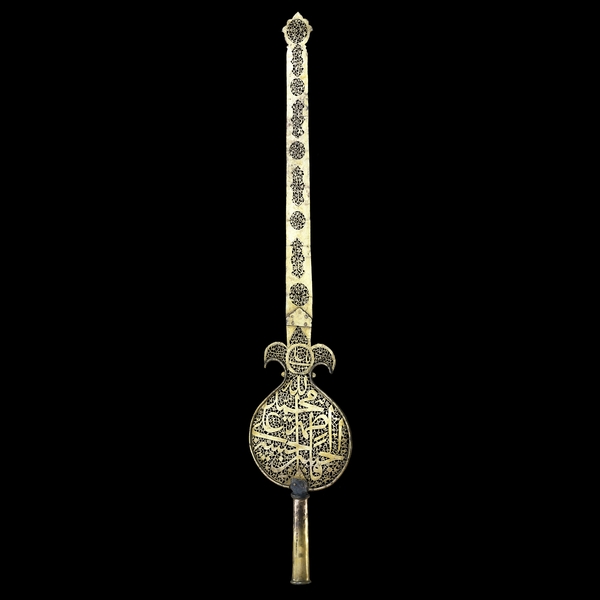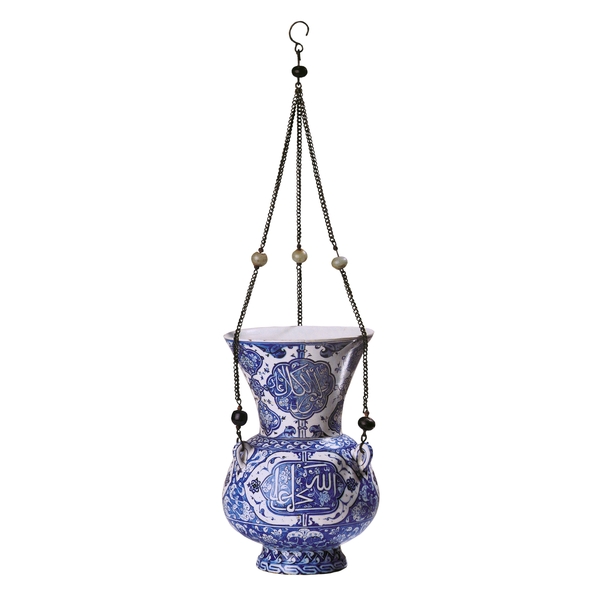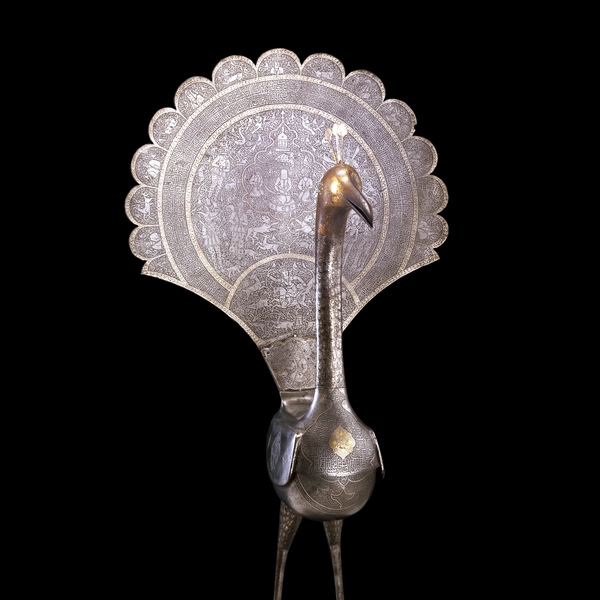Historical Images: The Naad-e-Ali, “Call Upon Ali….oh Ali, oh Ali, oh Ali,” in Ottoman Calligraphy, and Other Shia Inscriptions in the British Museum’s Islamic Collection
AN INTRODUCTION TO NAAD-E-ALI*
By HUSSEIN RASHID
Who is the Ali, the universal hero of Islam? The last of those who are known as the Rightly Guided Caliphs, the greatness of Imam Ali (a.s) is best represented by story of Khaybar. The story begins that Prophet Muhammad (s.a.s) laid siege to the fort of Khaybar, but the walls were so well-fortified that the army could not break through. The Angel Gabriel came to the Prophet Muhammad and told him to recite the naad-e ali:
Nade Ali, Nade Ali, Nade Ali
Nade Aliyyan mazhar al-ajaib
Tajidahu awnan lakafin-nawaib
Kullu hammin wa ghammin
sayanj-i Ali Bi wilayatika,
Ya Ali! Ya Ali! Ya Ali!Call Ali call Ali call Ali,
the manifestation of marvels
He will be your helper in difficulty
Every anxiety and sorrow will end
Through your friendship.
O Ali, O Ali, O Ali
And Hazrat Ali came to the Prophet’s aid, in an act of heroism commemorated in the lines of a qawwali:
The walls shake; the doors quake. Now all of Khaybar trembles hearing the name of Ali?
Ali came and tore down the gate of the fort, and the army of the Prophet crossed over and successfully ended the siege. Ali, of course, was a valiant fighter within in the fort and when victory was achieved, the Angel Gabriel appeared to Prophet Muhammad again and said to him:
There is no hero but Ali; there is no sword but Dhu’lfiqar
In this one story, how much do we learn about the value of Hazrat Ali in the Muslim tradition? We learn that the Angel Gabriel taught the Prophet a prayer for help and support, and that help and support comes through Imam Ali. One of the most popular stories of the Prophet Muhammad’s battles has as its hero Imam Ali. A fort shakes at the mention of the Imam’s name, because even at this point in the early Islamic period, the power and chivalry of Ali ibn Abi Talib was legendary. And that exceptional position was affirmed by the Angel Gabriel once more when he said, “there is no hero but Ali; there is no sword but Dhu’lfiqar.”
* Adapted from the author’s article Remembering the Heroism and Ethic of Hazrat Ali (a.s.)
~~~~~~~~~~
NAAD-E-ALI IN OTTOMAN CALLIGRAPHY

Photo Credit: The Trustees of the British Museum. Copyright.
Fakhri of Bursa (died 1618) was one of a number of Ottoman calligraphers known to have excelled in the delicate craft of qita, or cutout calligraphy. This technique was very popular in 16th/17th century Ottoman Turkey. Lines of finely written text were cut out, including the joining ligatures between the letters, and pasted upon a new page. Alternatively, letters could be cut out from the page, and the remaining sheet superimposed on another, showing the text in recession. Pages of qita were gathered in collectors’ albums, along with paintings and examples of different calligraphic scripts.
The inscription is written in a graceful nasta’liq script and reads:
Call upon Ali who causes wonders to appear, you will find him a help to you in adversity, all anguish and sorrow will disappear through your friendship oh Ali, oh Ali, oh Ali.
The openwork letters are in a cream ink outlined in gold, and are superimposed upon a brown backdrop with tiny sprays of white flowers. The calligraphy is bordered by a blue frame, filled with a gold trellis hung with pink and red blooms.
The signature ‘Fakhri’ is short for Fakhri ibn Vali el-Brusevi, who was well-known as a paper-cutter.
_________________
Brass Alam Inscribed with Allah, Muhammad, Ali, Fatima, Hasan and Husayn

Photo Credit: The Trustees of the British Museum. Copyright.
Alams, or standards, were carried in religious processions. The shape of the alam also symbolizes the sword of Imam Ali. The inscriptions on the rounded part are in openwork against an elaborate floral background. The words ‘God’, ‘Muhammad’, ‘Fatima’, ‘Hasan’ and ‘Husayn’ are part of a beautiful composition in bold script. The words “oh Ali’ appear in a roundel above. Along the ‘blade’ of the alam the names are repeated in openwork cartouches. This is one of a pair.
________________
Ceramic mosque Lamp With the Words Allah, Muhammad and Ali

Photo Credit: The Trustees of the British Museum. Copyright.
This lamp was made at the potteries of Iznik in Turkey. The inscriptions in cartouches include on the base the words ‘Allah, Muhammad, Ali’, referring to God, the Prophet Muhammad and Imam Ali ibn Abi Talib.
Mosque lamps such as this served a symbolic rather than a practical purpose. They hung from the ceiling by chains and their shape was based on earlier glass examples from Mamluk Egypt (1250-1517) which provided light by means of a wick placed in a container of oil within the lamp. The association between God and light in Islam is emphasized by this verse from the Qur’an’s ‘Chapter of Light’ sometimes inscribed on mosque lamps:
God is the Light of the heavens and the earth; the likeness of his light is as a wick-holder Wherein is a light (the light in a glass, the glass as it were a glittering star) kindled from a blessed tree — Holy Qur’an 24:35-6)
The decorations and blue-and-white colour scheme were influenced by Chinese porcelain, which was popular at the Ottoman court ruling Turkey at this time.
________________
FATIMID TOMBSTONE WITH BLESSINGS ON PROPHET MUHAMMAD AND HIS FAMILY

Photo Credit: The Trustees of the British Museum. Copyright.
This carved limestone tombstone is one of the many Fatimid tombstones of females recovered from the cemetery in Aswan. The name of the deceased was Fatima and she died in the month of Jumada II in the year 412 of the Islamic era (September-October AD 1021). The inscription starts with the basmala and continues with chapter 112 of the Qur’an (called surat al-ikhlas, ‘Purity of Faith’). God’s blessings are called on the Prophet Muhammad and his family, then the deceased’s name and date of death are given. The script is in the angular Kufic style but with flourishes at the ends of the letters characteristic of monumental scripts of this period.
Muslim graves are usually marked by upright stone slabs – one at the head, the other at the foot of the grave – despite orthodox disapproval of honouring the dead. Inscriptions on tombstones usually recorded the name of the deceased and indicated their faith. The increasing worship of the Prophet’s family at this time is significant. The piety of women is also notable and many of the tombstones recovered from Aswan are those of females.
________________
STEEL PEACOCK WITH DEPICTIONS OF HAZRAT ALI AND HIS SONS HAZRAT HASAN AND IMAM HUSAYN

Photo Credit: The Trustees of the British Museum. Copyright.
This fine steel peacock may have decorated the cross-bar of an alam, a standard carried during religious festivals in Iran. Hazrat Ali and his two sons, Hasan and Husayn, are depicted in the central medallion on the peacock’s fanned tail. The bird is also engraved with stylized inscriptions, princely hunting scenes, human busts and animals in a style typical of the Qajar period (1771-1924) in Iran.
Peacocks were symbols of beauty and the pleasures of the court throughout the Islamic world. The birds were often allowed to wander around the gardens of noblemen and models of peacocks ornamented the famous Peacock Throne taken from India to Iran by Nadir Shah in 1739. They also had a strong association with Shi’i and Sufi iconography.
Date posted: Monday, January 7, 2013.
Date updated: Wednesday, January 9, 2013 (typos).
Before departing this page please take a moment to visit Table of Contents for links to superb photo essays.
_____________
CREDITS
Photos/Captions:
The Trustees of the British Museum. Please visit the British Museum Website at http://www.britishmuseum.org/.
The above piece was prepared from the Museum’s exhibition on Arabic script. Please visit The British Museum Exhibition – Arabic Script
______________
Profile of Hussein Rashid, author of excerpt An Introduction to Naad-e-Ali, at Contributors.
Visit the Home Page for a summary and links to all the photo essays on this blog. We welcome feedback/letters from our readers. Please use the LEAVE A REPLY box which appears below. Your feedback may be edited for length and brevity, and is subject to moderation. We are unable to acknowledge unpublished letters.
Reading through the article on NADE ALI, I was curious about the credentials of the author, Husein Rashid…when I clicked on ‘Contributors’, he doesn’t seem to be listed.
Please scroll down on https://simergphotos.com/contributors/. He is listed.
This beautiful prayer, Nade Ali, is the same as when a child cries for its mother & is reassured just by being held or simply by her presence.There are similar prayers which have helped me & my patients over the last 43yrs of nursing — no matter the individual’s faith.
Good collection of Islamic culture in British Museum.
Love it.
Still puzzling me. I wonder if there are some commentaries, interpretations, exegesis on this prayer. I realize that this prayer is not adressed directly to Ali for help but rather is an invitation to others or someone to ask Ali for help. Maybe it can be in a silent dialogue of a man to himself, or of the intellect to the soul, or of the mind to the heart… I don’t know.
Yes…Ali (A.S.) indeed comes to your help but it needs your heartiest purity to call to him for your help.. And indeed I agree thatit is a silent dialogue.. As even Mawla ALI said that one who knows himself/herself will know the “ALMIGHTY ALLAH” And ALI (A.S.) himself said that during my prayers if I cannot see/feel ALLAH than I cannot enjoy my prayers.. So it means the search is on-going and continuous.
Thank you for these beautiful pictures. The prayer Nade-Ali in his literary form has always puzzled me. In the first three lines someone invites us to call on Ali and on the last two lines we talk directly to Ali. It makes me feel that this prayer was made out of heteroclit formulas and composed in the course of time.
This is a piece of poetry… beutifully motivates/invites to say ‘ bi-wilaayatika YAA `ALY’ as is obvious in other such devotional phrases: ‘YAA `ALY ADRKNEE! YAA `ALY AGHITHNI” or in ” YAA~ALY BI-LUTFIKA ADRIKNI” !!!!!!!!!!!!